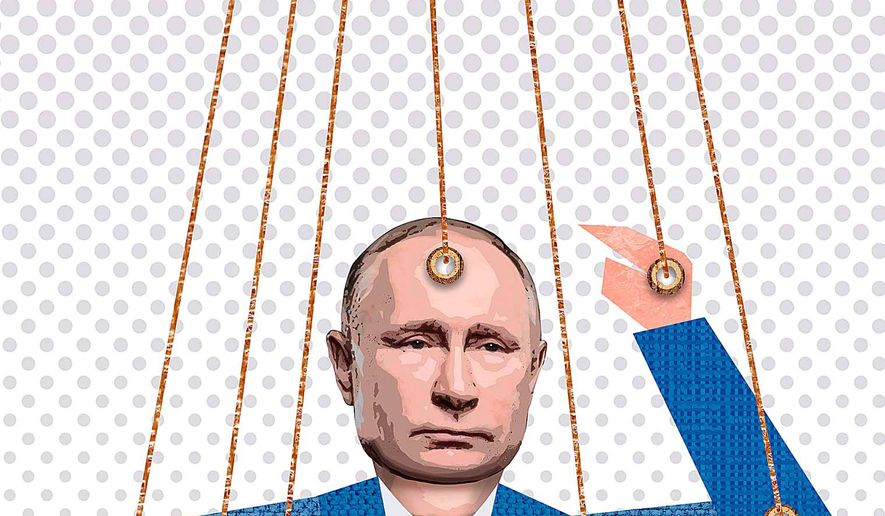OPINION:
Watching Donald Trump give a joint press conference with Vladimir Putin in Helsinki, Americans scratched their heads. It looked like President Trump was siding with the Russians over the Americans. Mr. Trump seemed to be questioning his own intelligence community.
“I accept our intelligence community’s conclusion that Russia’s meddling in the 2016 election took place — could be other people also,” Mr. Trump said. Mr. Trump also indicated that both sides deserved blame in the Russian interference in the 2016 presidential election. And finally he emphasized that President Putin very strongly denied any knowledge of Russian interference. Mr. Trump seemed inclined to believe him.
The reaction from most of the media and from Mr. Trump’s opponents was outrage, even going so far as to say Mr. Trump committed treason. Even some Trump supporters were wondering what he was doing.
The reality is that Trump, who is a results oriented businessperson and not a seasoned politician, was continuing a very tricky and personally costly negotiation. The goal of every president who has met with Russian leaders is to prevent war, limit aggression and ultimately improve relations.
That combination of goals has proven very difficult for past presidents with the exception of perhaps President Reagan. Because of the increased aggression by the Russians in the past 10 years, they now control or at least exert more influence in many parts of the world.
Some of their aggressions in the Syrian war or even in the U.K. poisonings, seem to be unstoppable. Mr. Trump is taking a very results-oriented, although politically incorrect approach. First, he continues to use his “peace through strength” approach that worked so well for Reagan. Early in his presidency he bombed Syria, reportedly killing more than 100 Russian troops.
Then he exited the agreement with Iran. Russia wanted its ally Iran to have a nuclear weapon. The Iran agreement would have allowed that in 10 years or so.
Mr. Trump convinced Congress to vastly increase defense spending to rebuild and strengthen our military, which will give the United States more capability to respond to any aggressive behavior. Mr. Trump also imposed tough sanctions on Russian industries and more painfully to Mr. Putin, sanctions on the most influential Russia business people.
Many of those business people’s dealings have a direct impact on Mr. Putin’s personal bank account. Mr. Trump then expelled Russian diplomats and closed some Russian offices in the United States, again hurting Russia’s economy.
In Brussels, Mr. Trump wanted NATO to strengthen its position in defense of Russian aggression. He convinced NATO to spend billions more to bolster defenses. Then he tried to convince Germany to avoid becoming dependent on the Russians for energy.
Germany is preparing to build a pipeline to Russia that will eventually supply up to 70 percent of Germany’s energy needs. The pipeline also bypasses the Baltic States, meaning that Russia could affect the Baltic States’ energy supply without effecting Germany. This pipeline obviously weakens Europe’s defenses against any Russian aggression.
The president also approved the sale of weapons to Ukraine. Despite Russian aggression, the Obama administration only approved the sale of humanitarian aid. The weapons will be used to defend Ukraine against further Russian aggression.
By using this peace-through-strength approach Mr. Trump can avoid war and limit aggression
Having reached two of the three goals, he went to Helsinki to work on the last goal. He wanted to improve relations. “If we got along with Russia, that would be a good thing,” he said.
A businessman knows that to be successful in any negotiation, you must first establish a rapport. That is especially true when dealing with a hostile party. A rapport would be difficult for Mr. Trump considering all of the pain he has inflicted on Mr. Putin in the past 16 months.
Even though he knew he would take tremendous heat from the Democrats, the mainstream media and even his own party, he worked to establish that rapport. He met privately with Mr. Putin for two hours; just one-on-one. Then he publicly made Mr. Putin feel that Mr. Trump personally was not his adversary and appeared to be willing to believe Mr. Putin’s denials of interference, in an almost sympathetic manner.
Now Mr. Trump has established a rapport so that he can meet Mr. Putin again to start moving forward on the real issues. Mr. Trump came back to the United States and tried to reassure Americans that he was firmly leading the country toward the goals while still maintaining a personal relationship with Mr. Putin.
In spite of the difficulty in walking that fine line, and in spite of the tremendous amount of heat he is taking, this is likely to have a very favorable outcome for the United States.
• Michael Busler is a public policy analyst and a professor of finance at Stockton University.




Please read our comment policy before commenting.